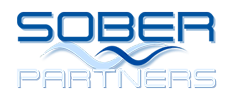United Healthcare


Paying For Rehab With United Healthcare
Did you know that approximately 16 million Americans who are older than 12 years old have abused drugs? Substance abuse disorders have created a new crisis in America. Many people are suffering from disabling addictions and don’t know where to turn for help.
Does United Healthcare cover rehab? As one of the largest healthcare insurance providers in America, it helps in knowing exactly what your insurance covers so that you can seek out help. If you have an interest in learning more about coverage for rehab, then keep reading on for more information.
United Healthcare
United Healthcare is a common insurance policy and is owned by the largest private insurance company in the United States – United Health Group. It recently made the news for changes in policies based on emergency room visits. With millions of people impacted by United Healthcare insurance, it can seem even more daunting for understanding your benefits for coverage with drug rehab.
The Affordable Care Act – signed in 2010 – helped thousands of Americans get drug rehab coverage. Substance abuse rehab programs were now considered essential benefits under insurance plans. However, between 2005 and 2018, more than one-third of people with drug addictions and substance abuse disorders did not know if they had coverage. Also during that time frame, coverage increased by almost 4% amongst private insurance companies.
Researchers found that lack of knowledge was one of the biggest barriers in patients receiving adequate drug rehab coverage. Simply put – people did not know whether or not their insurance covered rehab programs.


Does United Healthcare Cover Rehab?
United Healthcare bases coverage off of a patient meeting the Medicare criteria.
In general, this entails both outpatient and inpatient coverage for drug and addiction rehab. The criteria are might for inpatient rehab if it is deemed medically necessary or reasonable. Any medication during this time would also qualify for at least some coverage.
Also, there has to be a higher probability of medical complications for the qualification of an inpatient detox program. This includes risks for:
- Delirium
- Confusion
- Unconsciousness
People will meet these criteria for heavy alcohol or substance abuse as an abrupt detox can often lead to further medical complications. The criteria also list that the inpatient stay for a detox program should not last longer than five days.
If it goes past five days – other medical criteria must be met. But what happens after the detox stage?
Medicare uses alcoholism as one criterion for a substance abuse disorder. Someone with this addiction would complete detoxing and then look at qualifications for an inpatient or outpatient stay. This falls under the gray area of “medically necessary.”
Medicare and other insurances use this term a lot for approving or denying coverage. Typically, someone will gain approval for a continued inpatient rehab stay if they meet the following guidelines:
- Documentation for failing treatment in outpatient rehab
- Medical management is necessary
One of two things happens – a patient did not accomplish the goals set out by less intensive therapy and needs an inpatient stay. The second aspect is that a person detoxes but the medical practitioners and physicians deem it prudent on their end to continue monitoring at an inpatient level.
Coverage for this extends between 16 to 19 days. At this time, the insurance company either needs further documentation from a physician for an extended stay. Or – the patient discharges to a lesser level of care.
This might include a direct discharge home with approval for outpatient services. The Medicare criteria that United Healthcare and other insurance policies follow is a three-week guideline for detoxing and rehabilitation.
Keep in mind – this does not mean that every person fits into this mold. There are many individuals who require less or more treatment and those cases are handled on an individual basis.


United Healthcare Approved Rehab Facilities
Take a look at your options for insurance. United Healthcare is a broad network and includes different policies. This health insurance offers coverage for:
- Medicare
- Medicaid
- Community insurance
- Private insurance
Some facilities may accept United Healthcare’s private insurance policies but not Medicare. However, most states offer coverage of United Healthcare and Optum. Because of the vastness of coverage, you will likely find that your facility does take United Healthcare.
Contact your insurance company and find out which programs fall under your plan. Additionally, you can go onto the rehab facility’s website and verify your insurance.
Get Help Today
Does United Healthcare cover rehab? Yes – it provides its members with partial or full coverage of inpatient rehab stays. It also can cover at least part of your outpatient treatment.
To qualify for coverage, you must meet Medicare criteria and guidelines that deem treatment medically necessary. Your physician and rehab team can help iron out the details of your stay and coverage.
Not all rehab centers provide equal treatment. For that reason – contact us today and let our skilled and qualified team members help get you started on your rehab stay.

